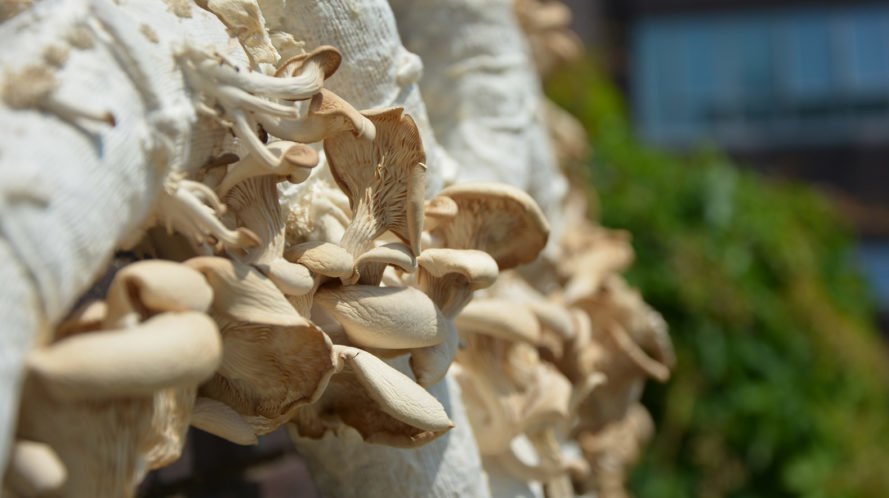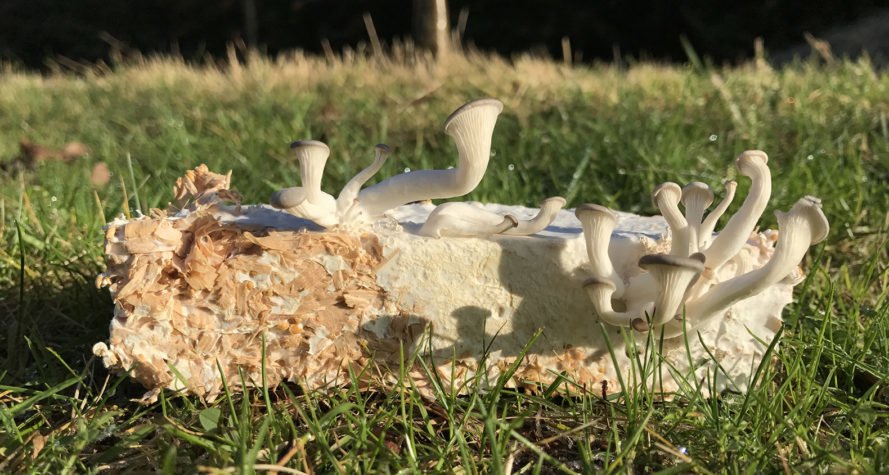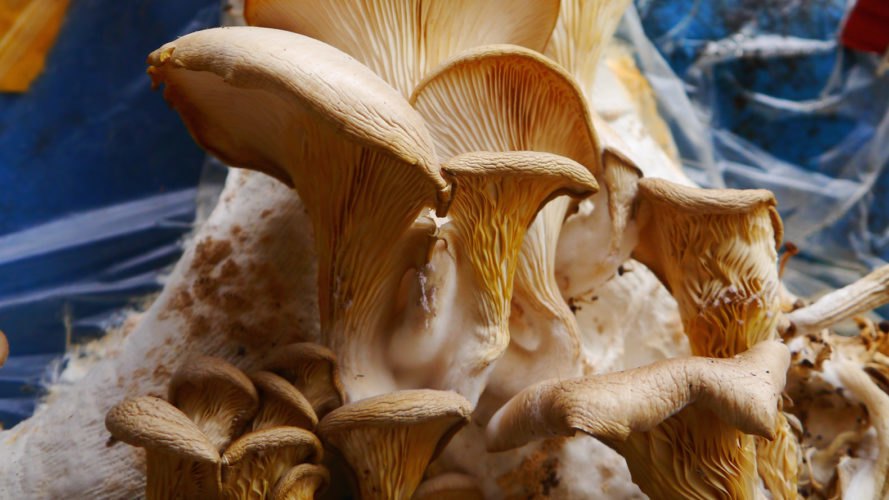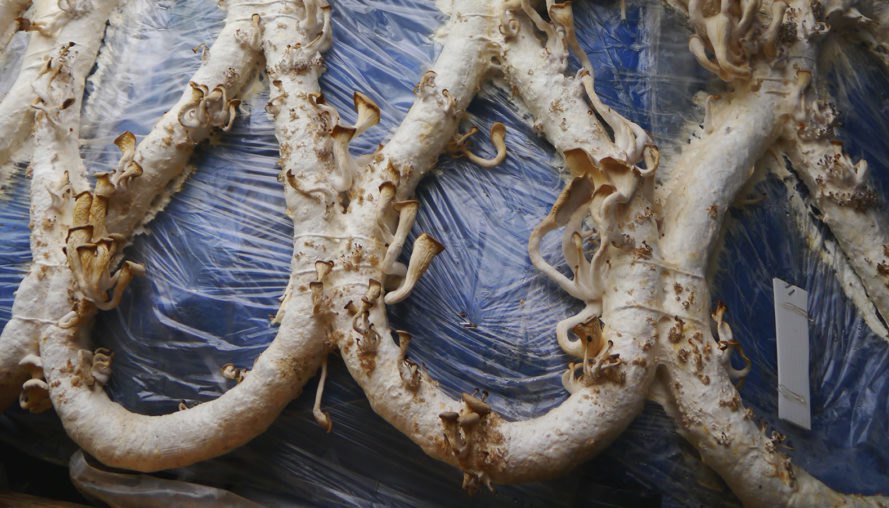Source: inhabitat.com
Published: June 27, 2017
Written by Lidija Grozdanic
Could the buildings of the future be grown instead of built? Brunel University student Aleksi Vesaluoma has found a way to grow living structures using mushroom mycelium. Vesaluoma worked with architecture firm Astudio to create these Grown Structures, which offer a waste-free, organic alternative to conventional construction materials

These living, growing structures use mushroom mycelium as a sustainable, organic alternative to conventional construction materials. Brunel University student Aleksi Vesaluoma developed a way to use mycelium–vegetative part of a mushroom fungus– as glue and create complex architectural structures. Vesaluoma worked together with architecture firm Astudio to build the Grown Structures series as prototypes proving that, eventually, building can be grown rather than built.
When mycelium grows on organic materials such as straw, it binds the matter together like glue. Aleksi Vesaluoma and Astudio mixed oyster mushroom mycelium with cardboard and poured the material into tube-shaped cotton bandages.
These tubular forms were then placed inside a ventilated greenhouse for four weeks to grow and strengthen. This process turns organic waste into nutrients for the growth of the mycelium – and it’s completely waste-free, since the structure is 100% biodegradable.

When mycelium grows throughout organic materials such as straw, it binds the matter together like glue.

The team mixed oyster mushroom mycelium with cardboard and poured into tube-shaped cotton bandage.
Grown Structures have prompted several attempts at commercialization in the USA and the Netherlands. The fact that the fungi which grow on the structures can also be eaten makes the project perfect for pop-up restaurant

These tube-shaped forms are then placed over mounds and placed inside a ventilated greenhouse for four weeks.

During this time the material grows and becomes robust.

The great thing is that the process turns organic waste into nutrients for the growth of the mycelium and is completely waste-free, since the structure can be biodegraded to benefit the local environment.

Grown Structures have prompted several attempts at commercialization in the USA and the Netherlands.

The fact that the fungi which grow on the structures can also be eaten makes the project perfect for pop-up restaurants.
